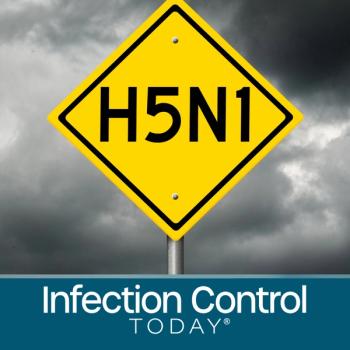
- Infection Control Today, May 2020 (Vol. 24 No. 4)
- Volume 24
- Issue 4
A Conversation With Judd Hollander, MD: How Telehealth Can Address the COVID-19 Outbreak
Nancy Messonnier, MD, director of the CDC’s National Center for Immunization and Respiratory Diseases, last month
Infection Control Today®: Is telehealth in general better positioned to help during the COVID-19 outbreaks than in past outbreaks? If so, how so?
Hollander: The largest difference with COVID-19 and past disasters or outbreaks is twofold. First, telemedicine is much more advanced and is commonly used in some health systems. For example, Jefferson has done over 150,000 synchronous audio video visits across over 1,000 providers. Thus, when a crisis comes, it is possible to rapidly scale. The second difference is that there is not a problem with infrastructure as might happen after a hurricane so that communications methods are not disrupted.
ICT®:Are doctors and patients more inclined to use telehealth than they were even 5 years ago? Are there concerns among physicians about reimbursement for services?
Hollander: Without a doubt, reimbursement is the main thing that has prevented further adoption of telehealth. Only a few states mandate the payers pay for the services regardless of how they are delivered (in-person or via telemedicine). Thus, when payers prioritize their shareholders and try to avoid paying while physicians try to prioritize their patients, there is a large financial liability to providers and health systems that is not filled by the payers. Thus, fewer systems are using telemedicine than would otherwise use if it was reimbursed. When you do not have a baseline program, you cannot really scale it overnight.
ICT®:You say that the telehealth]services have increased in popularity in recent years. Can you give me a better idea of how much that popularity has increased?
Hollander: At Jefferson, we have a 200-400% increase year over year depending upon which use cases. We are now doing nearly 300 telemedicine encounters per day, and that was before COVID-19.
ICT®:Do some conditions/diseases lend themselves to telehealth better than others? For instance, would oncology be something that’s telehealth-friendly?
Hollander: The best use case for telemedicine is for the patient who is happy to do a telemedicine call. We have been surprised to learn that it can be used and be very well accepted in areas we never would have predicted. A couple examples include post mastectomy care, care following surgical procedures and nutritional consultations for diabetes. We tend to let patients drive the decision to do telemedicine rather than in-person care.
ICT®:How has telehealth been used against the flu?
Hollander: Jefferson has JeffConnect, a direct to consumer on-demand app that anyone in our service area can download for free, register and within 5 minutes do a visit with an emergency physician-the same people who work in our urgent care centers and emergency departments. We treat a lot of patients with the flu or presumptive flu. Patients that do not meet evidence-based criteria for anti-viral agents can be treated symptomatically. Patients who meet criteria can either be sent for testing or be treated empirically. We have been doing this for years.
ICT®:Can a physician actually diagnose COVID-19 via telehealth or does there need to be samples taken?
Hollander: The approach to COVID-19 via telemedicine begins with screening the patient for risk of COVID-19 using the latest CDC recommendations. Then the approach is much like that with influenza, except for an increased emphasis on social distancing. If patients are stable and have a COVID-19 exposure risk, we have coordinated with the local department of health so that they can go home for home quarantine and the DOH can come to the house to perform testing. Our goal is very much to prevent exposure of anyone else to the person under investigation while providing the best care for the patient, in accordance with the latest CDC guidelines.
ICT®: Nancy Messonnier, MD, director of the CDC’s National Center for Immunization and Respiratory Diseases, recently suggested that hospitals and other healthcare facilities use telehealth in dealing with COVID-19. Has this been the biggest CDC push for telehealth use that you recall?
Hollander: Yes.
ICT®:How can telehealth help infection preventionists and hospital administrators do their jobs better? For IPs especially; that seems to be very much of a hands-on job. Where would telehealth fit in?
Hollander: We use telehealth in the outpatient setting but we also use it in the in-person setting. Let’s face it, consults give advice over the phone. They don’t need to touch each patient. We try to limit the number of people in the room and leverage telemedicine so the person inside the room can be the eyes and ears of the others. Of course, when procedures are needed, the best person to do the procedure needs to don PPE and go in the room, but the more we can limit exposure the better.
Articles in this issue
over 5 years ago
May 2020 Bug of the Monthover 5 years ago
Establishing Vascular Access Teams for Patient Safetyover 5 years ago
Searching for the Missing Link (Nurse)Newsletter
Stay prepared and protected with Infection Control Today's newsletter, delivering essential updates, best practices, and expert insights for infection preventionists.






